








The magazine of the photo-essay

Feb 2017 back issue

by Malcolm Lightner

“A free, really high quality photo-essay magazine. Fabulous!”
Stephen Fry. British actor, writer and film & documentary maker



After moving to New York in 1999, I began to think about my heritage and
the place where I grew up, Naples, Florida. I am a fourth-generation, native
Floridian. My mother’s family goes back to the settler days, when this
region of South Florida was wild and largely uninhabitable swampland. My
ancestors mostly farmed, fished, and hunted, and eventually they
ventured into land development and real estate. My great grandfather
Forest Jehu Walker was born in Settler’s Creek (now Bonita Springs) on
June 9, 1897. Among other accomplishments, he introduced the now
standard waterfront development concept of parking your car in the front
yard and your boat in the back. In 1949, he and his sons James Lorenzo
and Robert Lewis (“R.L.”) purchased 294 acres for $30,000. It took almost
14 years to build Aqualane Shores and sell all the lots. One of Naples’ first
waterfront communities, its homes are now valued at well over a million
dollars each.
Looking back, I began to reminisce about the landscape that was so
familiar to me as a child: the pine and palm trees, the swampland, the
alligators, the heat and humidity, and the sunny blue skies and pristine green waters of the Gulf of Mexico. I remembered
how I used to go on expeditions in search of gopher tortoises in the empty lots of Naples Park, a residential community
located in North Naples just a few blocks from the beach. And I recalled the mud-racing event that originated in my
hometown, swamp buggy racing at the Mile O’ Mud. The homespun buggies and their drivers represent a specific
Floridian vernacular and play a central role in the cultural identity of Collier County. As a boy, I lived in a trailer park
located down the street from the first official swamp buggy track off Radio Road. The track was later relocated to the
Florida Sports Park off Rattlesnake Hammock Road at the intersection of Route 951, where it resides today.
My Great-uncle R.L., one of the original swamp buggy drivers, helped to formalize the race into a legitimate sporting
event, which officially launched in 1949. In his custom-built buggy, Flying Saucer, R.L. was Swamp Buggy King in 1951
and 1952. In 2003, I went to visit my great-uncle Lorenzo at Naples Community Hospital, shortly before he passed away.
He talked about his brother R.L. and the early days of Naples and racing swamp buggies. He told me how he had to ride
his bike “real fast” across the dirt road intersection of what is now referred to as Four Corners so the “panthers wouldn’t
git ’im.” He also spoke of the dedication of the Everglades National Park by president Harry S. Truman on December 6,
1947. He said he had film footage of the president cutting the ribbon at the ceremony.
Needless to say, a lot has changed since those pioneer days and my childhood years. Four Corners is no longer a dirt
road intersection surrounded by thick, subtropical forest, and there are no more empty lots in Naples Park. In Florida,
gopher tortoises are on the endangered species list, categorized as a “threatened species,” and are found only in a few
designated areas. The small town I once knew is no longer recognizable. The beach access has become largely
privatized, and the landscape is marked with condominiums, golf courses, and strip malls. To my surprise, the trailer I
#once lived in is still there, and the swamp buggy races have endured, despite urban development and political pressure
to sell off the desirable acreage owned by Swamp Buggy, Inc. (contd. scroll down)
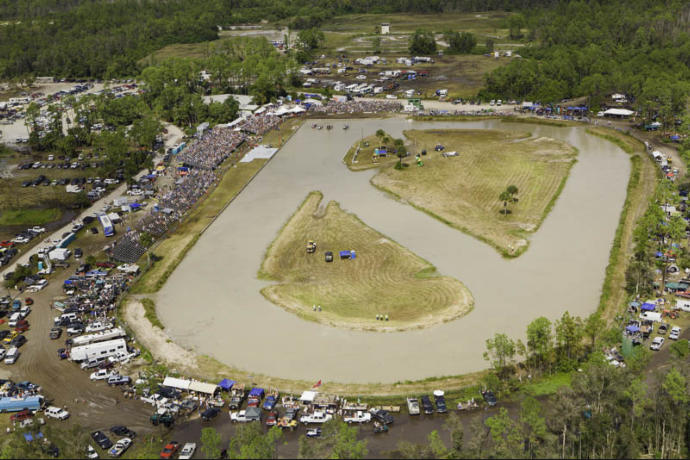
The Mile O’ Mud is an oval track of 7/8 of a mile with a 1/8-mile diagonal lane slashed through the center. The racing
lanes are approximately 60 feet wide. On average, the muddy water is four to six feet deep, with three strategically
placed holes. The largest hole, located in front of the grandstand, is the treacherous “Sippy Hole,” named for the
legendary driver “Mississippi” Milton Morris, Swamp Buggy King 1955, who repeatedly got stuck in it. 2008.
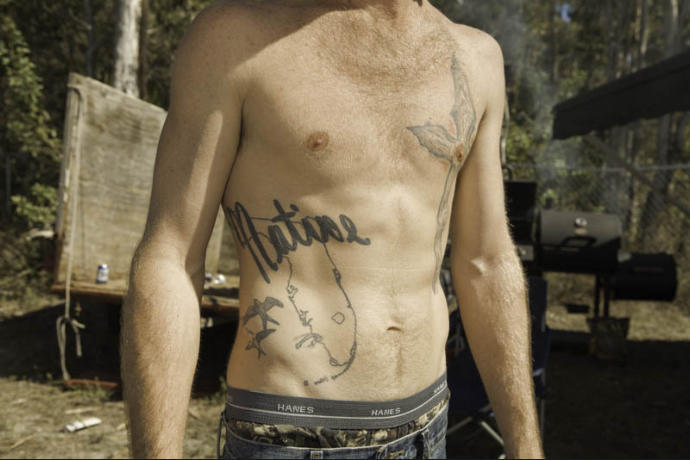
Native, 2011. This native Floridian, or “Florida Cracker,” has a tattoo illustrating the state of Florida with a shhook
piercing the location of Collier County along its west coast where the swamp buggy races originated.
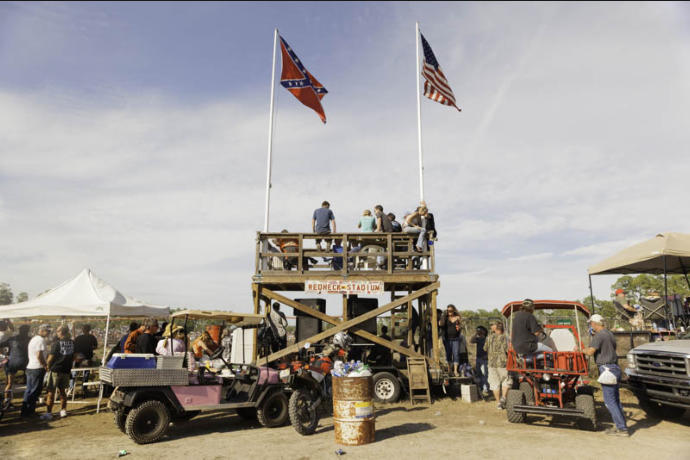
Redneck Stadium, 2011. The name “Redneck Stadium” is the creation of Daniel Patrick Hoolihan, IV, who describes
rednecks as “people who would probably be having more fun than others.” He and his wife Dawn have been attending
the races for 25 years.
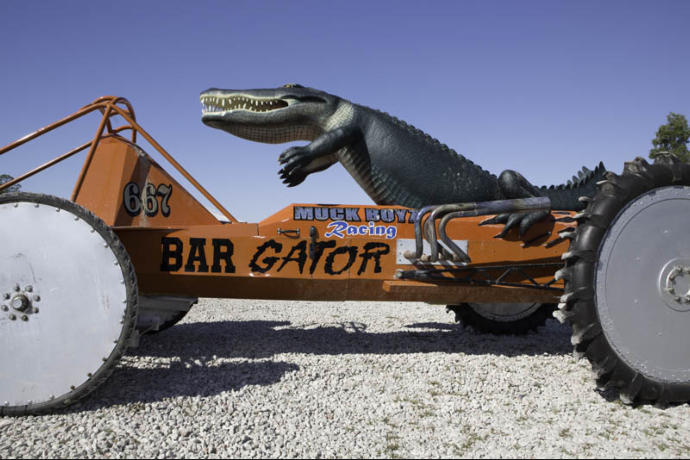
John “Allen” Bar eld drove the Bar Gator swamp buggy. The fabricated giant alligator, which appears to be attacking
the driver, is mounted on the back of the buggy and is one of the most unusual designs at the Florida Sports Park. Bar
eld hailed from Clewiston and passed away Feb. 15, 2015. Allen, as he was called, was the co-owner of Everglades
Machine Shop and the owner and crew leader of Muck Boyz racing crew.
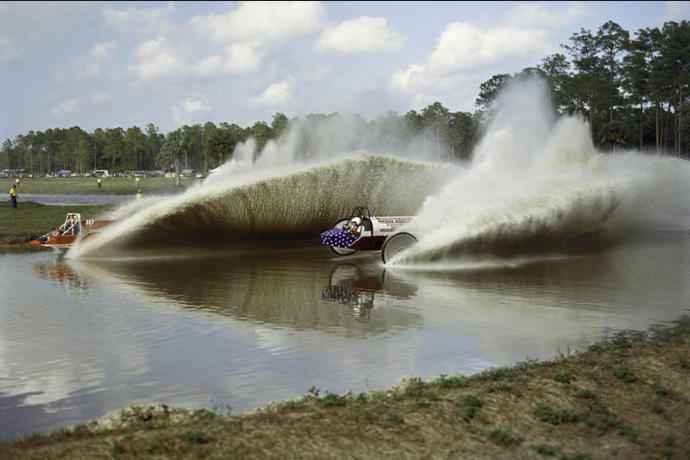
Final Lap, 2003. Leonard Chesser’s blazing-orange, pro-modi ed, two-wheel-drive Dat’s Da One outmuscled Tyler
Johns’ V-8 Super Stock entry Patriot and the modi ed four-wheel drive buggy Dat’s It, driven by Leonard’s 21-year-old
daughter Amy.
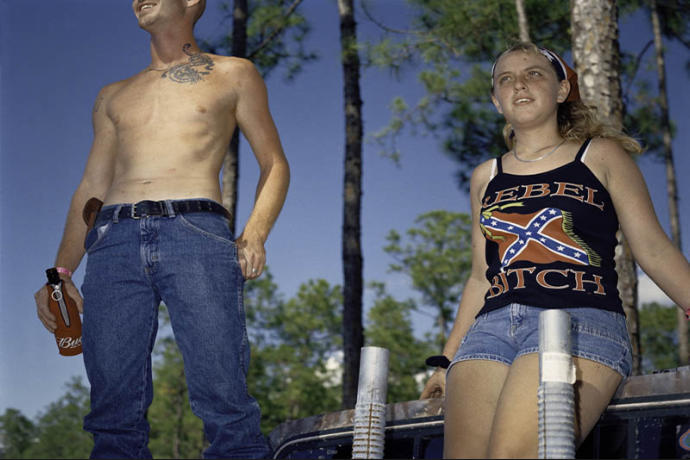
Daniel and Tracey Gordy, watching the races, 2002.
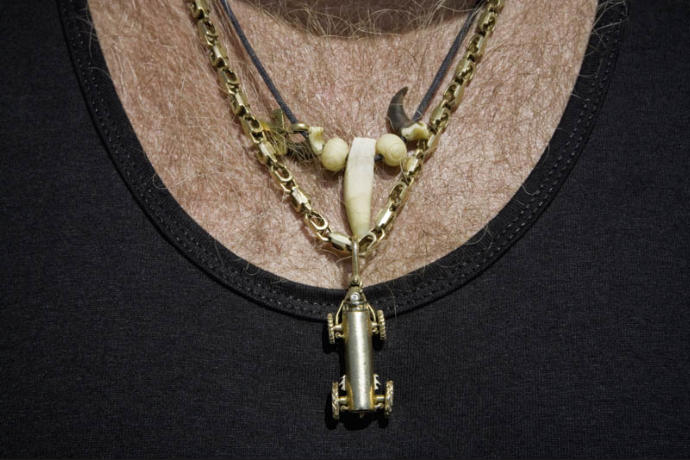
24-Karat Swamp Buggy, 2006. For $1,600, Terry “T-Bone” Walsh had a solid gold buggy pendant custom-designed by
a local jeweler.
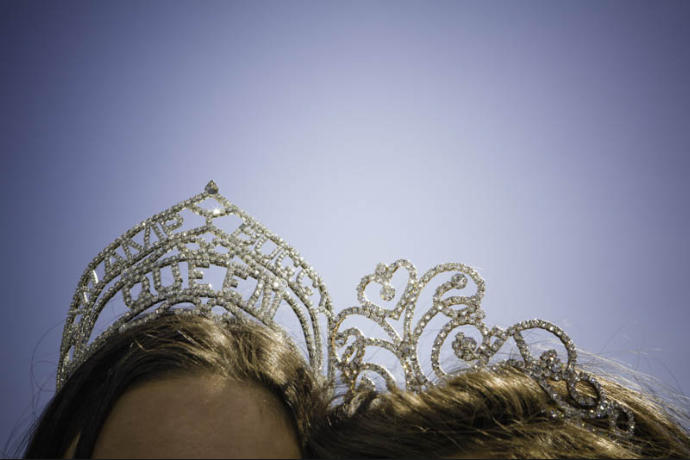
Tiaras, 2006. Naples high school students compete for the Queen’s crown in the annual Swamp Buggy Queen
Pageant. The chosen Queen presents awards to winners at the Swamp Buggy races and speaks at public events
during race weekends. Her Court consists of the Queen and the rest; second, and third runners-up.
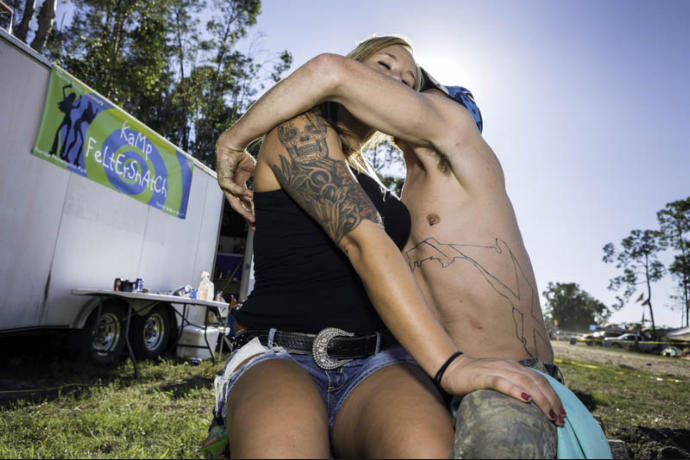
Kamp Feltersnatch, 2013.
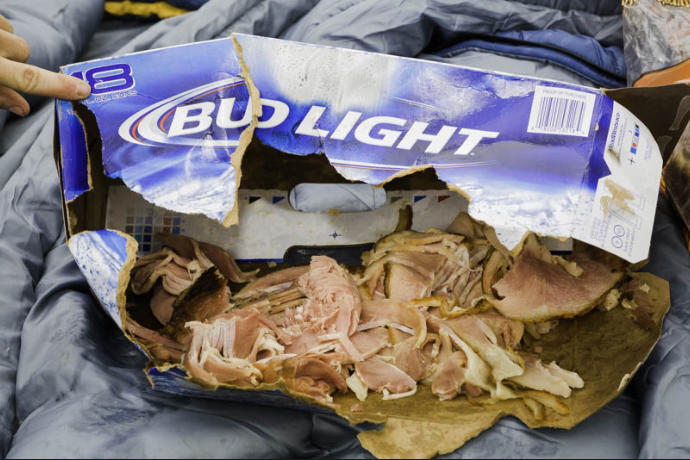
Spiral Cut Ham, 2006.

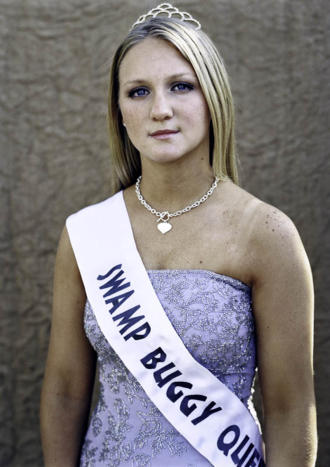
John “Lefty” Cusick and Rose, 2002. Lefty lives in
Naples and is a dedicated race fan. He lost his right arm
in a manufacturing accident.
Courtney Jolly, Swamp Buggy Queen, 2004. The Swamp
Buggy Queen Pageant is held every April.

During a preliminary heat on Sunday January 27, 2013, Glenn Chesser, son of Leonard, lost control of his buggy, Dat’s
On, and tipped it upside down. Trapped for only a few seconds, he burrowed his way through the mud with his helmet,
despite the compound fracture to his arm. “I was down there long enough to talk to God,” he said. “I thought about my
grandbabies and how I wanted to get out of there to see them again.” Glenn was taken by helicopter to a nearby
hospital, where Dr. Patrick Leach, an orthopedic trauma surgeon, worked for nearly seven hours to save the arm.
Before embarking on my “Mile O’ Mud” project in October 2002, my encounters with the races consisted of a few
abbreviated visits to the track with my mother, who was not interested in the races but in locating my father, who had
gone missing for several days. This frequent occurrence eventually led to their divorce. In the 1970s, the swamp buggy
races were somewhat like the Wild West, where people carried guns in holsters and drank heavily. It was a “locals only”
party and not exactly a wholesome family event. Every October, however, my mother took my sister and me to the
Swamp Buggy Parade, which marked the opening of hunting season and kicked off the fall racing season. The parade
was a community celebration of swamp buggy culture, where drivers could show off the individuality and mechanical
ingenuity of their buggy designs. Women donned calico frocks, a Swamp Buggy Queen was crowned, and men sported
bushy beards in anticipation of the Swamp Buggy Days beard contest.
I began to photograph swamp buggy racing to pay homage to my family heritage and to document a rare slice of
Americana. On my first visit to the track, I drove into the parking lot of the Florida Sports Park, heard the engines of the
buggies roar, and witnessed the great plumes of water trailing behind the boat-dragster hybrids. I could feel the
vibrations from the raw horsepower pound against my chest, and it almost took my breath away. I thought to myself that
this was going to be fun! The races occur three weekends out of the year, and I managed to make the trip at least once
a year from 2002 to 2013 except 2005, when the races were cancelled due to Hurricane Wilma.
In my own mind, this project felt like time travel. I experienced firsthand the people and culture that were a large part of
my parents’ life that I had never witnessed but that felt somehow defining. Initially, it was the buggies themselves that
attracted me, but I soon began to discover endless narrative possibilities and connections among the drivers, spectators,
and enthusiasts. I unveiled family connections that I did not know existed and heard numerous stories about my father,
who had the reputation of a hard worker in the plastering and construction community. He was an all-around tough guy,
someone you would not want to mess with. While in Naples, I sometimes stayed with my father and came to realize
that behind the tough exterior is a sociable, giving, and sensitive man. He took me to the home of Lonnie Chesser of
the legendary Chesser racing family where they talked about the good ol’ days. I will always remember when my father
called me “buddy” for the first time and wiped down the early morning condensation on my car’s windshield to assure I
would have a safe drive.
I came to understand Swamp Buggy Racing as a metaphor for life’s daily struggles and the innate drive to overcome
obstacles against great odds while trying to maintain a sense of humor and grace. The races demonstrated to me the
all-American desire to compete to win, as well as the power of family and community.
Going to the races has also been a bittersweet experience. While it was exciting and adrenaline- filled at the track, the
community and my family have seen better times. I am reminded that life is indeed short and full of unexpected bumps
in the road. All the more reason to let go and enjoy the ride.
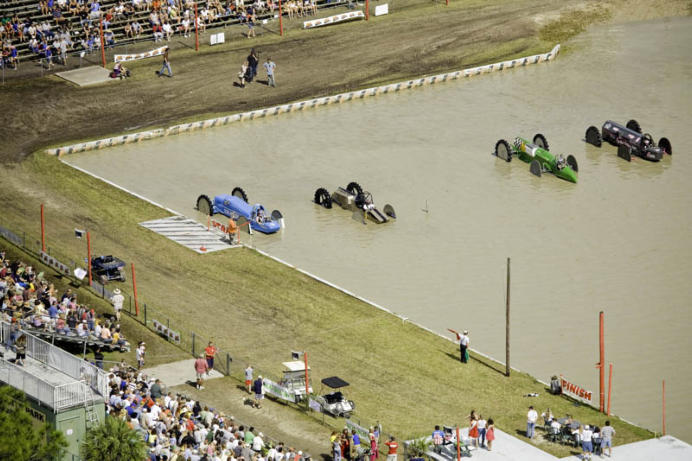
Starting Line, 2008.
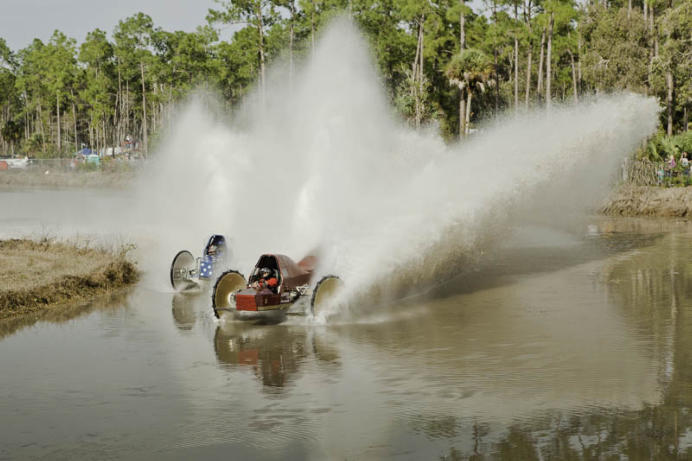
Feature Race, 2011. Eddie Chesser in The Rapture races against Tyler Johns in The Patriot during the final feature
race.
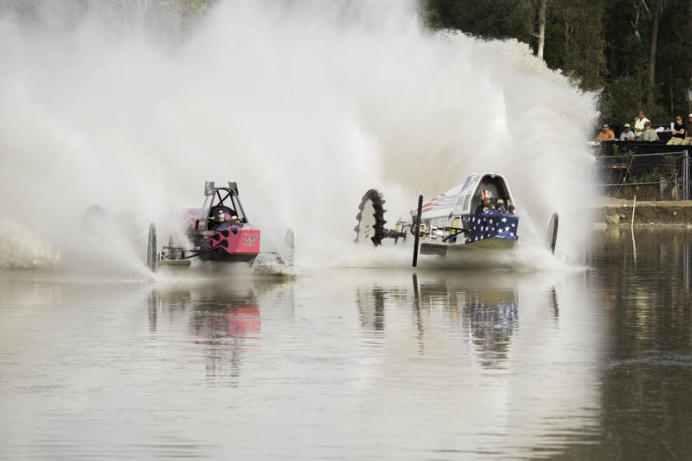
Full Throttle, 2013. Bonnie Walsh and Randy Johns battle in the Pro-Modi ed race. Bonnie later won the Big Feature
racing against Troy Ortega with a time of 50.95 seconds.
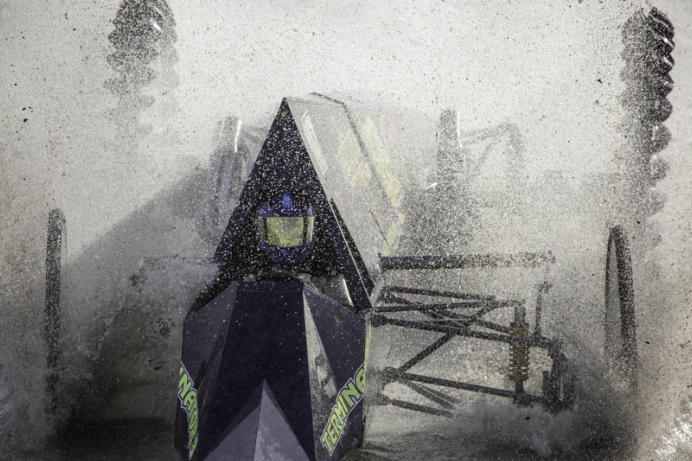
Troy Ortega, Terminator III, 2015. Daring swamp buggy driver Troy Ortega pushes his pro modified entry called
Terminator 3 to the limit during time trials at the Florida Sports Park.
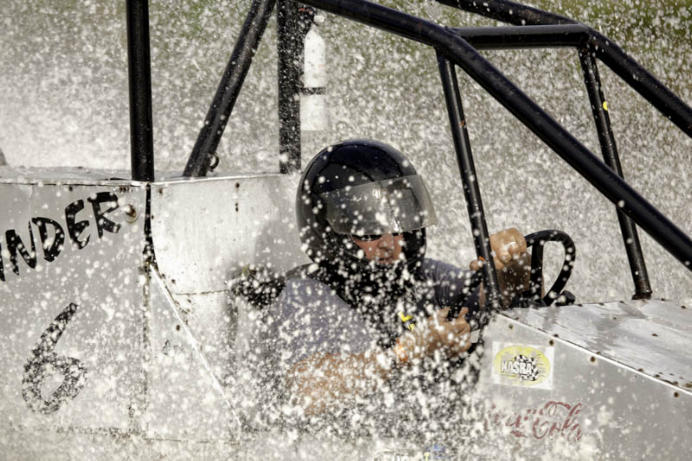
John Parks, Sidewinder, 2008.






